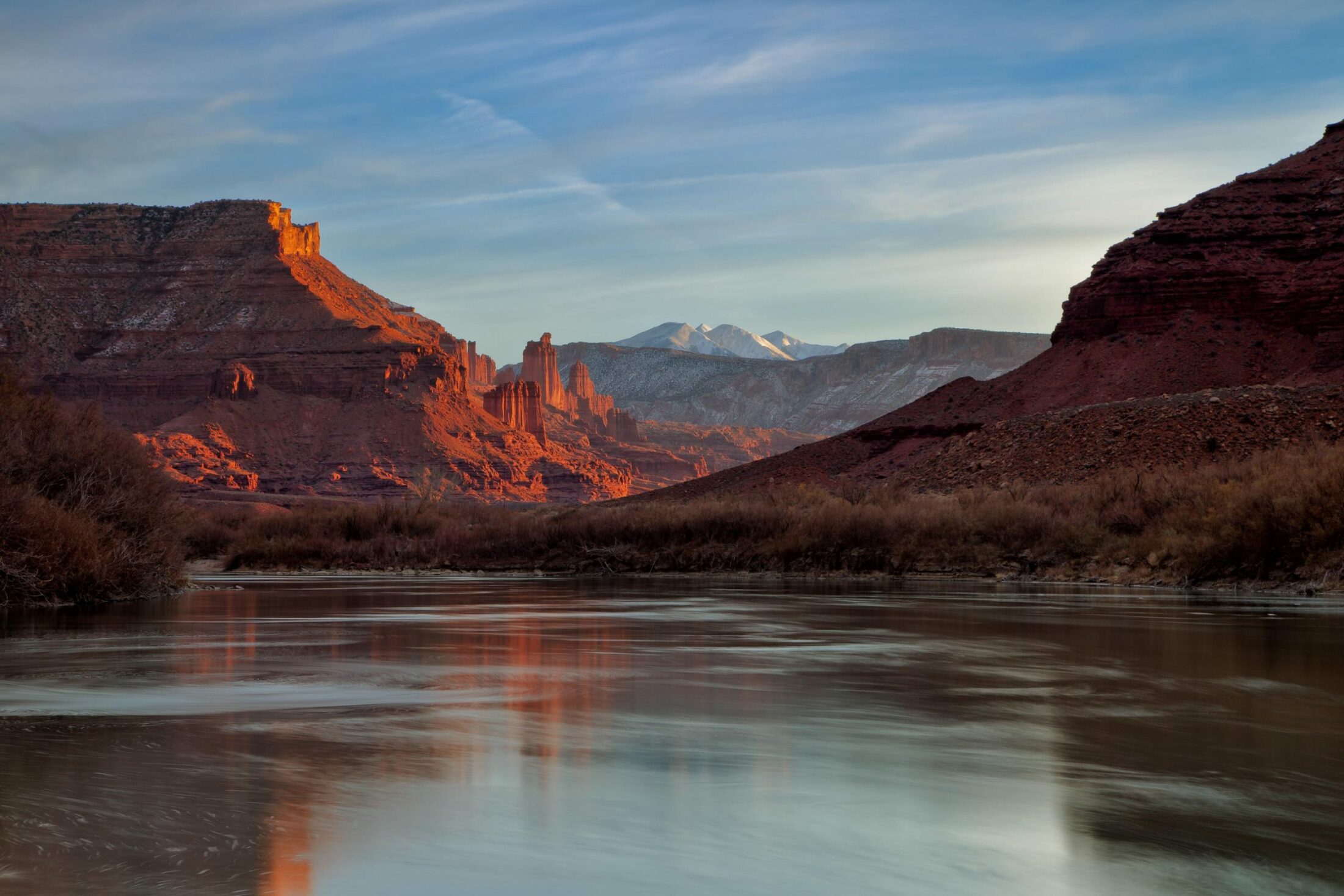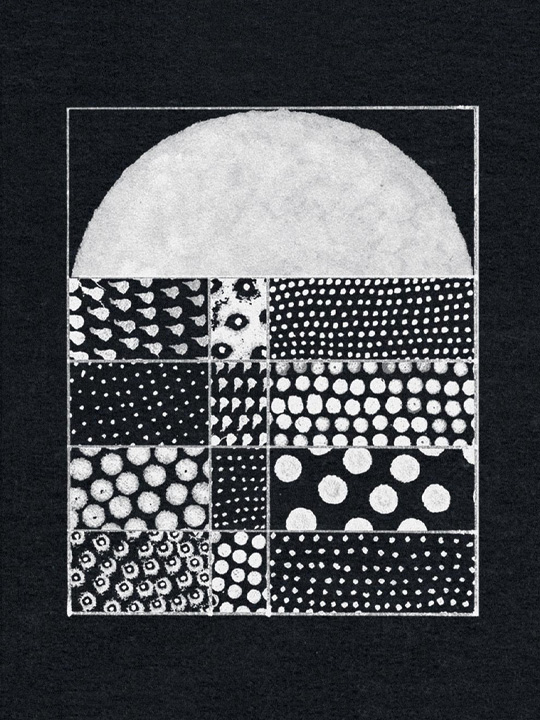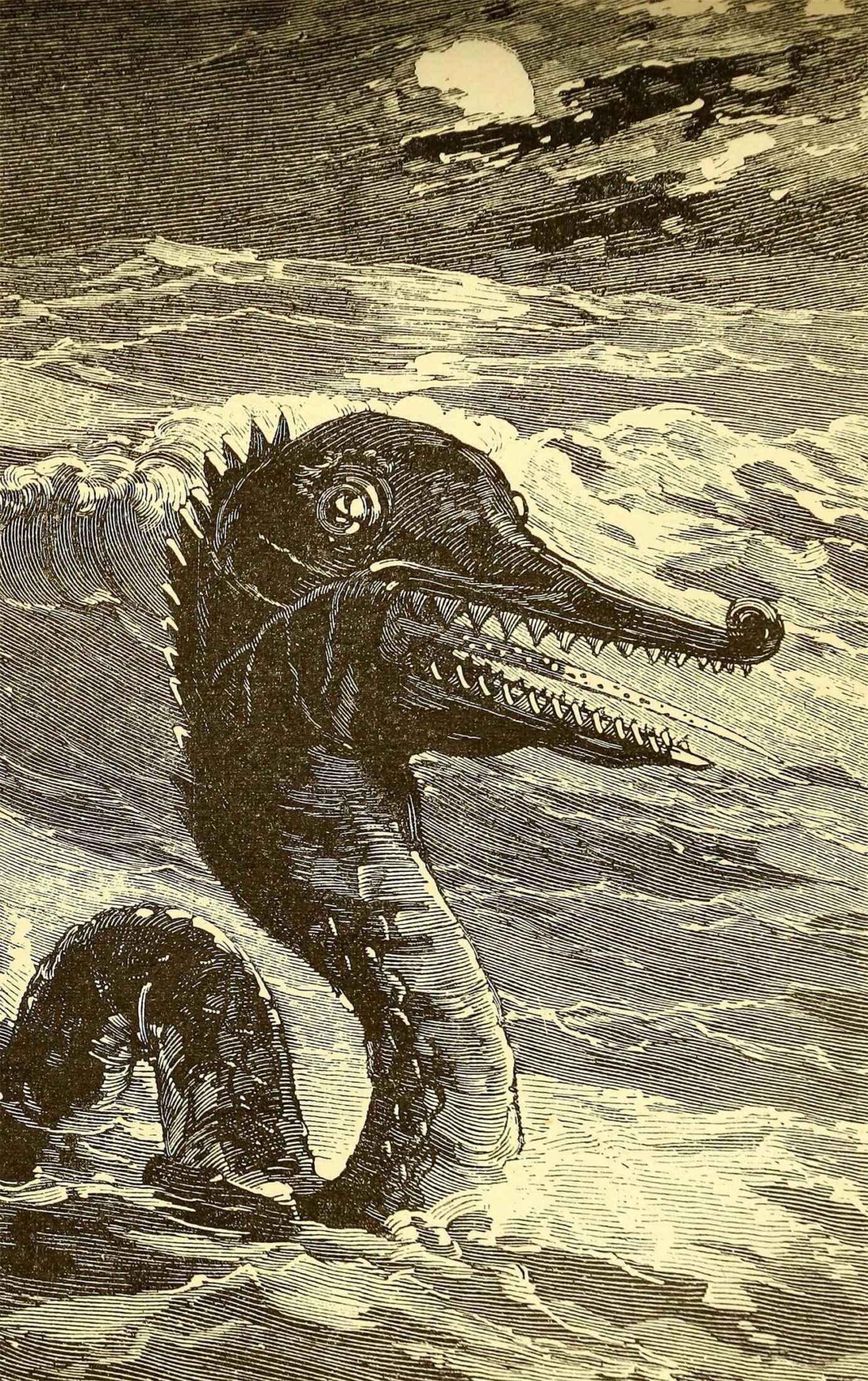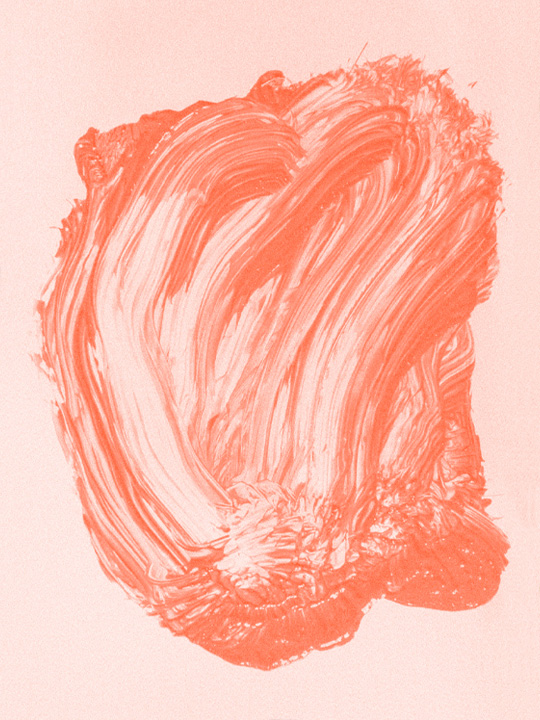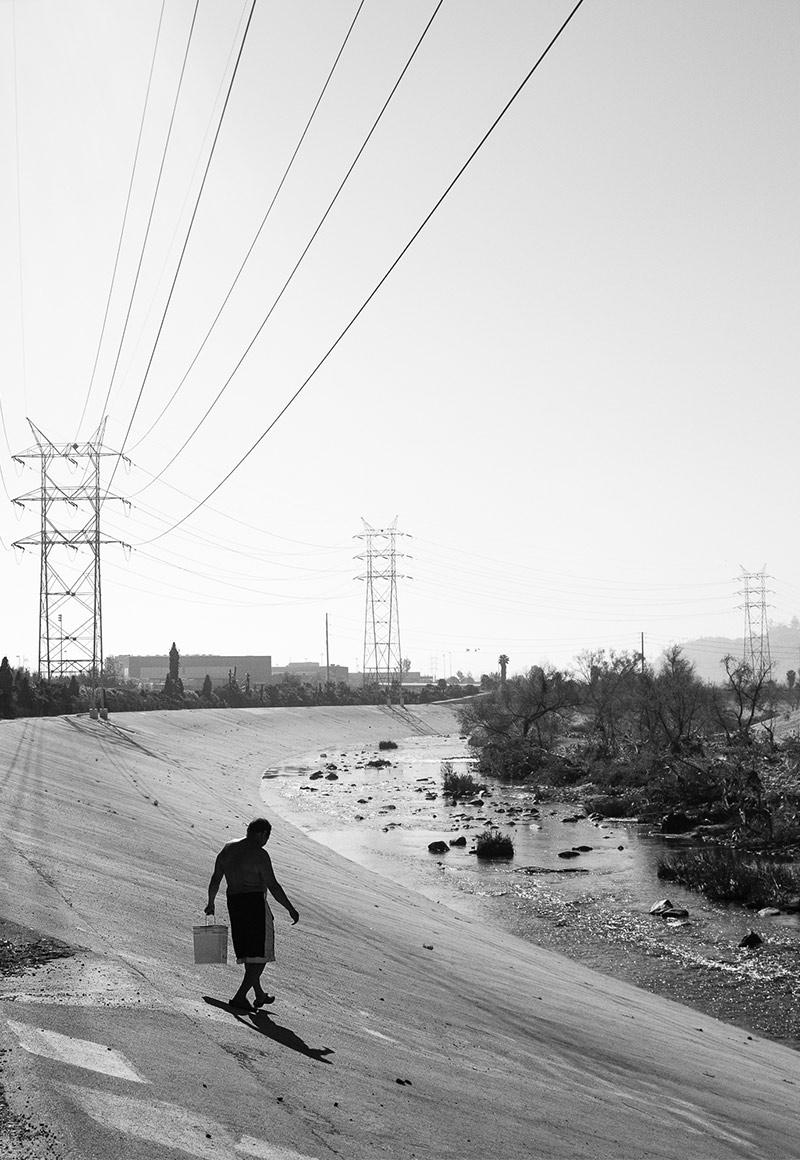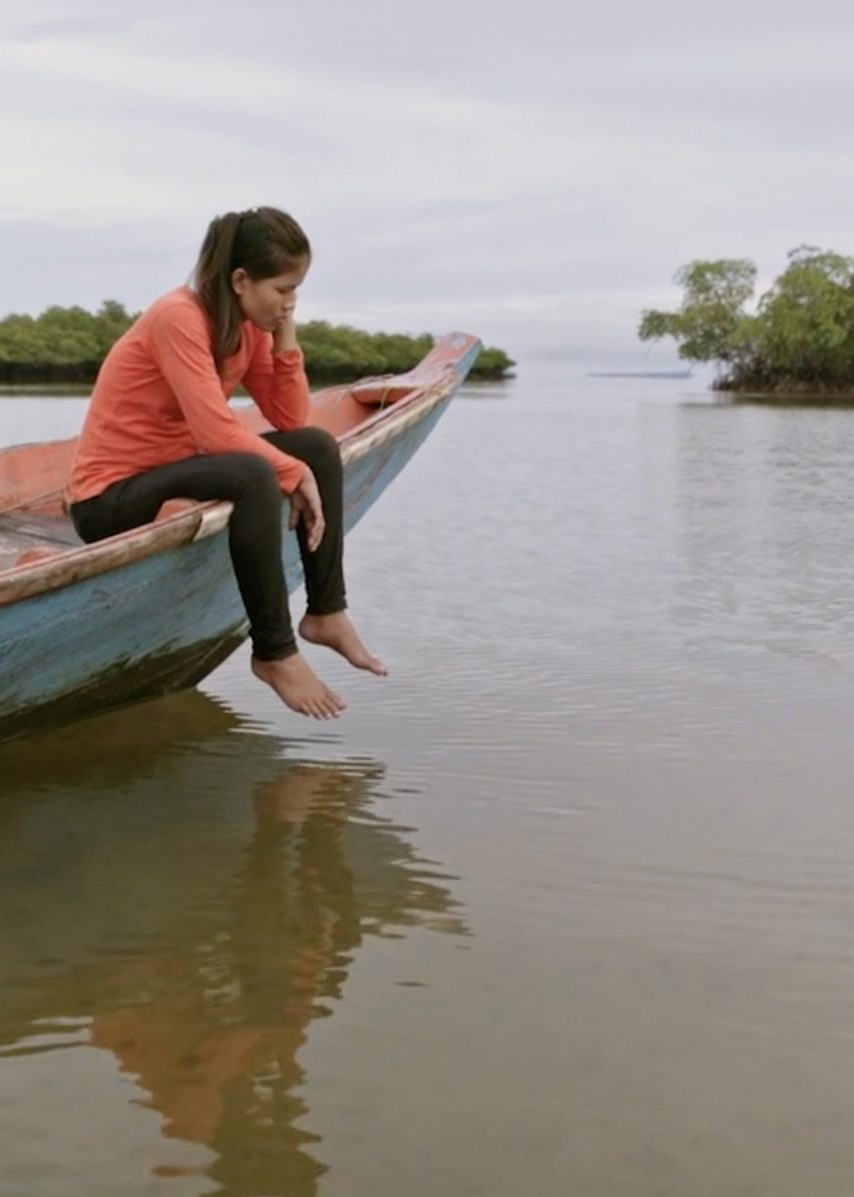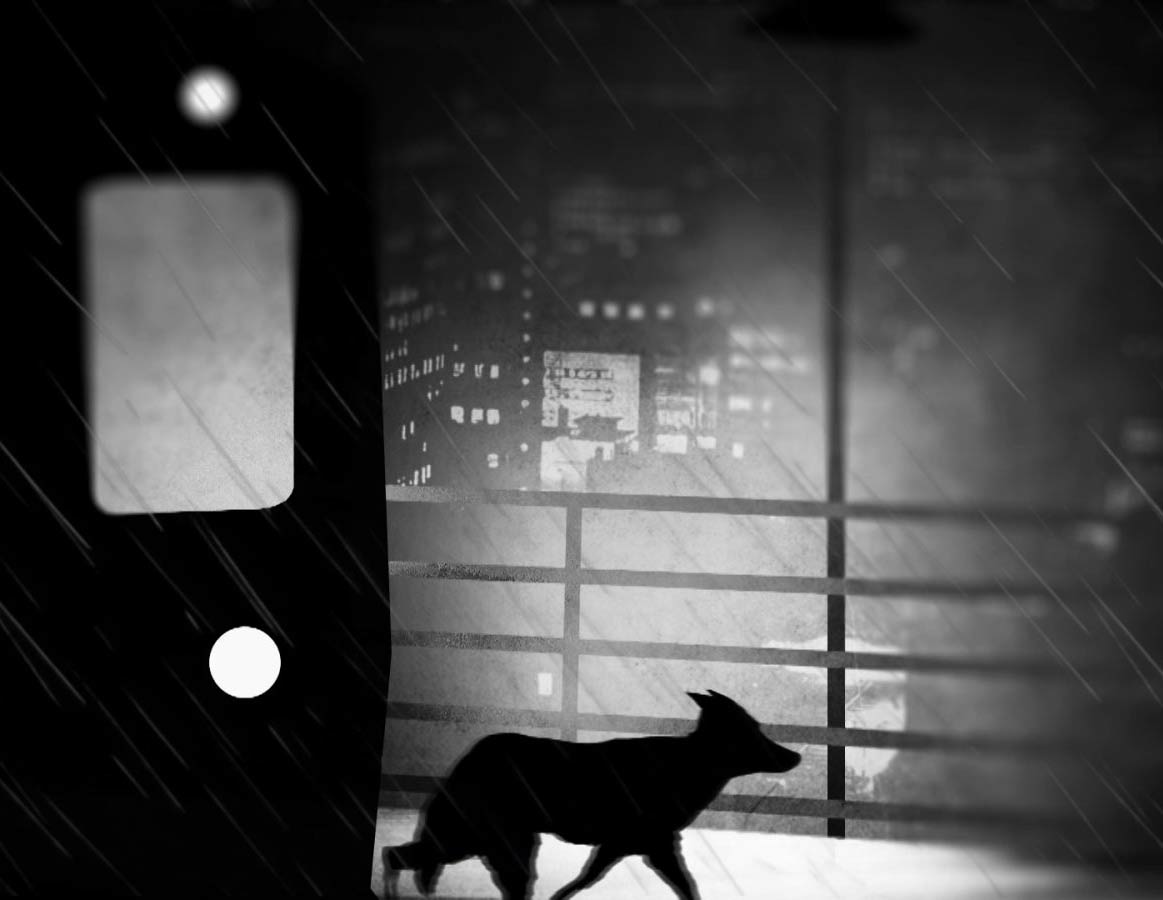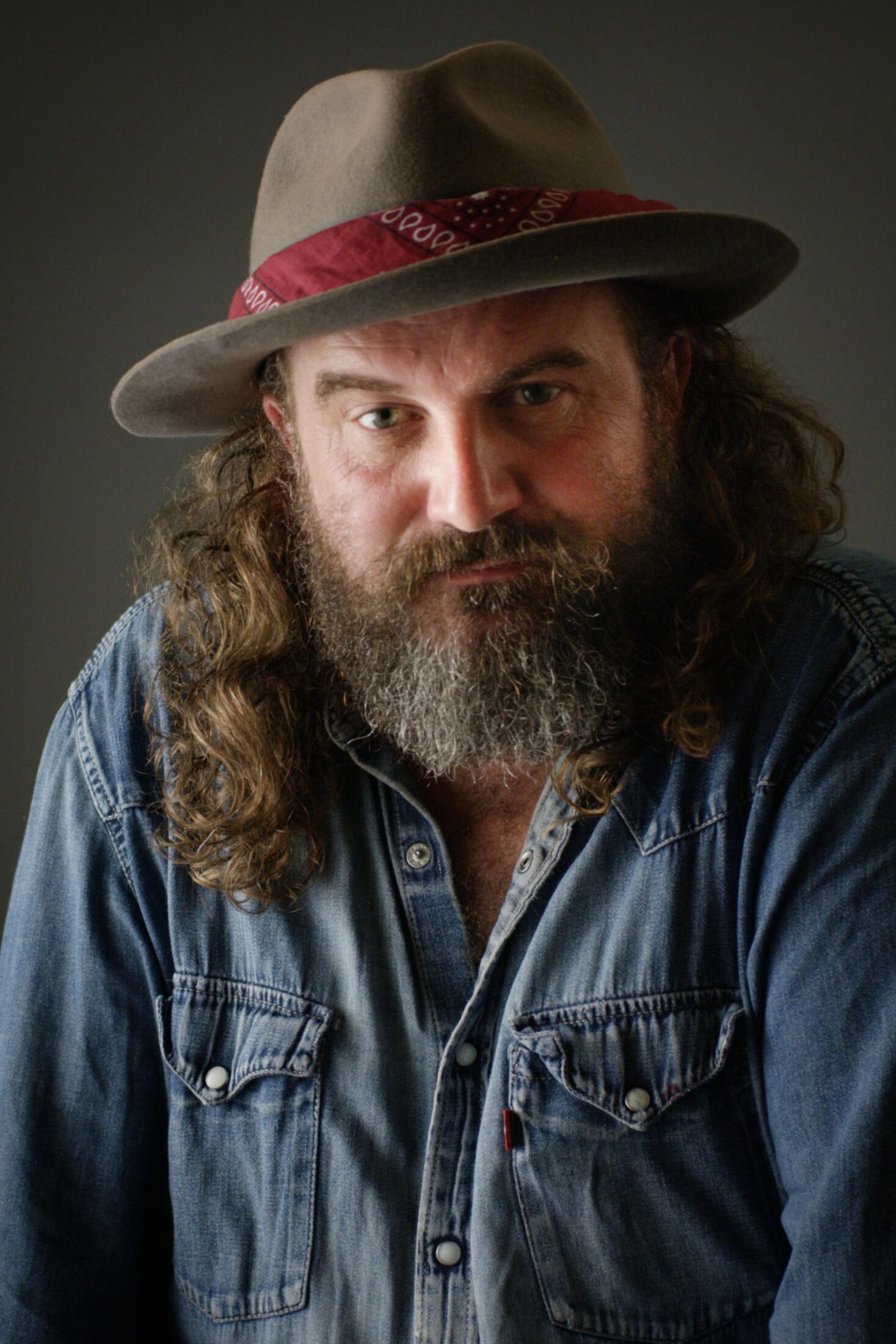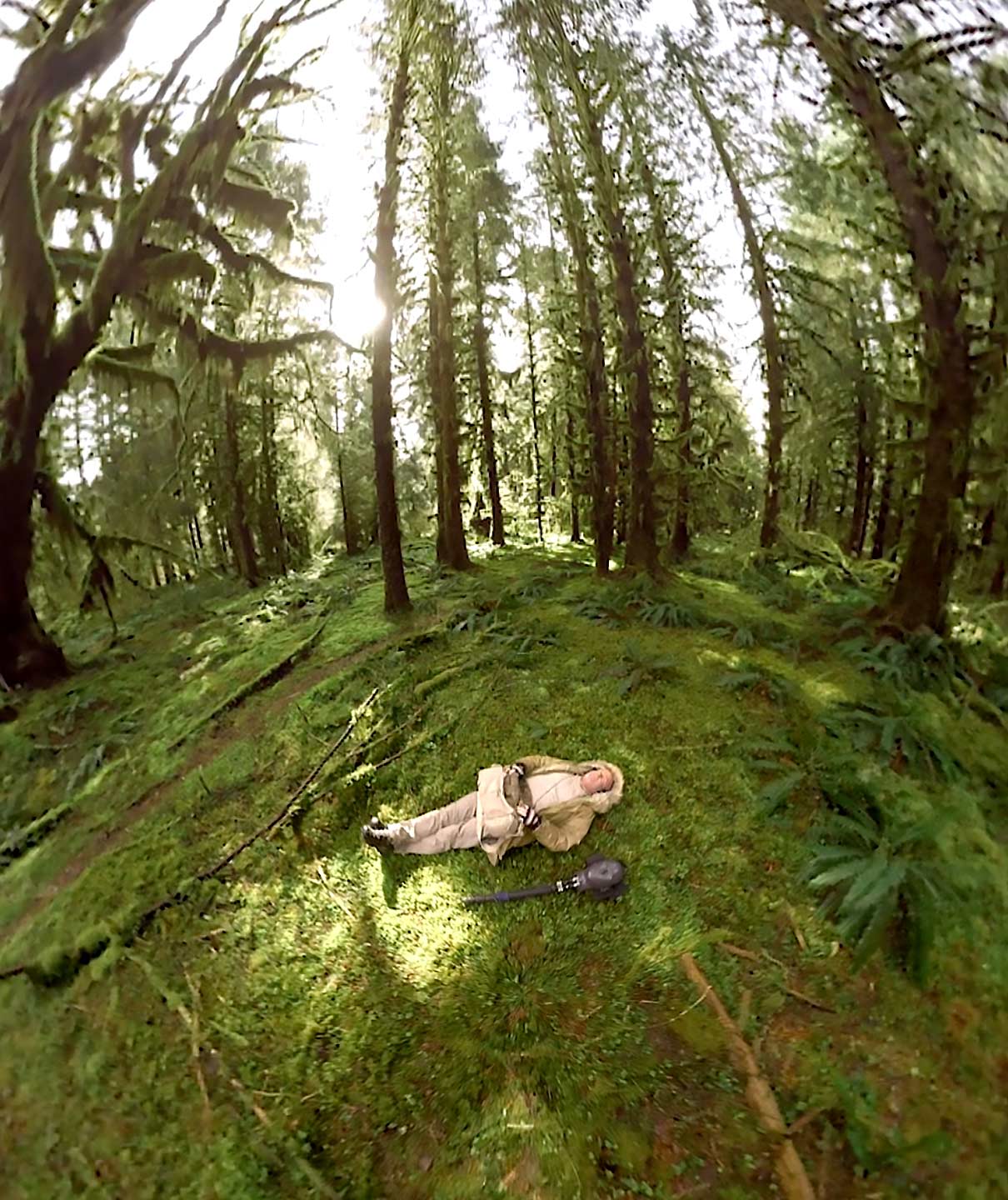
Craig Childs writes about adventure, wilderness, and science. Among his recognitions are the Orion Book Award and the Sigurd F. Olson Nature Writing Award. Craig’s newest book, Atlas of a Lost World: Travels in Ice Age America, explores the arrivals of humans into a new hemisphere during the late Pleistocene. Craig teaches writing at the University of Alaska and in the Mountainview MFA program at Southern New Hampshire University. He was born in Arizona and now lives off the grid in western Colorado.
On a solo canoe trip down the Green River, paddling through the Canyonlands of southeast Utah, Craig Childs reflects on what it means to be alone in the wild. Encountering risk, isolation, and joy, and entering into conversation with the land and waters around him, Craig explores what happens when we choose to be in solitude.
Something about the way a river trip starts. Gear is thrown in, and when the current picks up and carries you downstream, your sense of time and distance changes. Connection to the other seven billion or so people on the planet loosens, while contact with something bigger, and in ways smaller and more intimate, takes hold.
I am putting onto the Green River where it flows through the Canyonlands of southeast Utah. For five days I’ll paddle a canoe—which I prefer as a craft—a simple vessel, no frame or pump, no cockpit into which you must burrow, the lower half of your body truncated at the hips. It’s a flatwater river from here out—no rapids for fifty miles to where I will meet the Colorado River and hitch a ride upstream with friends who run a jet boat to the Potash Landing, the nearest paved road.
Quick gear, no stove, feels like my bones are being lightened, like taking flight. I push in swiftly, getting ahead of a group of many canoes and ice chests that will pass me later that day, and I’ll never see again. I try to get in a trip like this once every several years—a ritual, going to the desert alone to feel what it is like to remember. By profession, I spend more days in nature than most, but I’ve not been spared the smart phone or toiling neck deep in my inbox, weeks behind, then months, then years.
For these few days, no one will know where I am other than the spooling meanders of this river.
Alone is a state of being. Not loneliness, but aloneness. It is something sought rather than avoided. You can find it in just a moment, a breath: in Central Park, or early morning on the street, sitting on a stoop, or leaning against the window of a bus or subway car, alone in a throng of commuters. Sometimes in a grocery store, I’ll turn into an aisle and find the row to myself, and I’ll pause to relish the emptiness before the next shopping cart rounds the corner.
On the river there is no cell signal. Satellite phones have a hard time getting out; the canyon walls limit the range of the sky. The breaths you take are your own, not those of everyone else in the room, the plane, the car. The experience is becoming rarer than ever. With phones buzzing and beeping like pinball machines, constant inquiries that require constant replies, solitude is an antiquated commodity.
Alone, every breath and movement becomes conversation. Every spin of the water, every slow step of cliffs, has something to say.
I push onto the river quickly, not wanting to be caught up in the fray of ropes and gear from the group behind me. It’ll take them an hour to get going. After a mile on a smooth, easy current, I no longer hear the banging and voices behind me. Now I can get to work, stowing my paddle: a pack placed here, food box there, dusty rope slid through webbing and handles secured to canoe thwarts. It is my own world, no one to say otherwise.
Alone, every breath and movement becomes conversation. Every spin of the water, every slow step of cliffs, has something to say. I grunt more when I’m alone: one tone for satisfaction, another for dismay or frustration. There is a grunt for surprise, one for amazement, and one for small joys like a damselfly landing on my paddle blade or the jaden carapace of a beetle floating by.
As a kid, I hungered to be by myself. I had friends, sleepovers, but my favorite was being with nobody at all. After school, I’d hop fences and explore fields, finding places I thought no one else had ever found. When I went adventuring with other kids, they talked, or asked me to carry something, or stopped when I wanted to continue, or didn’t stop when I wanted to sit and enjoy a place, or they wanted to go someplace other than where I wanted to be. Spoiled. Self-absorbed. Introverted. Only child. I’m sure there are many explanations. Does not play well with others. Skirting around the treacherous games of four square and tetherball, at recess I would head as far out from the schoolyard as I was allowed to go. I dug holes at the fence line, burying army men and jacks, artifacts for some future digger.
Those who work the rivers out here, driving shuttles, delivering pick ups and drop offs on the water, call people like me solo geeks—those who either no one will go with, or who’ve realized their happiest place is taking time when no one else is around.
I’m not a hermit. I often welcome the company of others, sometimes I crave it. I like the way ravens preen each other, the thoughtful, intimate touches; the way their beaks sometimes rest against each other. But how striking is the one alone in the sky, cut out of a shadow and suspended above the earth?
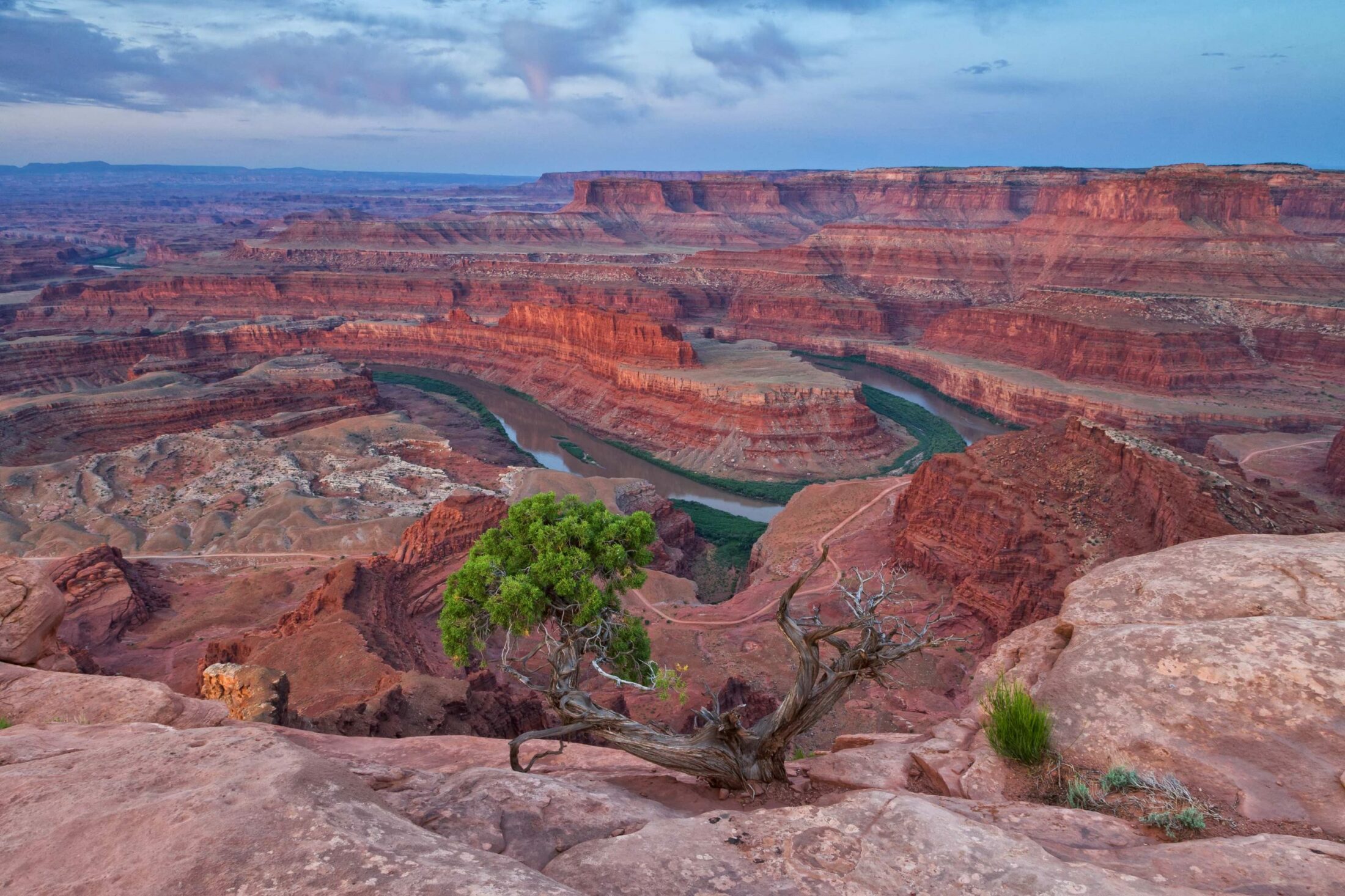
Photo by Bret Edge
The river moves like a procession, like a ceremony. Fringed with cottonwoods, willows, and the abundant scourge of tamarisk, it wears a green shawl as it moves through chili-colored sandstone (ristra-red Wingate) and tumble-down boulders of Chinle banded with rainbow shales. I know the place, not like the back of my hand, not without surprises; but I know how to maneuver, where to sleep, where to find fresh water dripping in the back of a canyon. Things you’d want to grasp when going alone.
How long does it take to cease the chatter of the mind? Forever? Don’t bother trying to stop it. You are not here to be something you’re not. But do take pause when a single strand of spider web blows across the sky, glinting in the sun like the arc of a scythe.
I paddle a few gentle miles, letting the river set the pace, slow on the shallow inside bends, faster around the outside. Buttes and cliffs cleave, like blocks of chocolate hundreds of feet tall. These monoliths become clocks, their weights slowly shifting, one stage opening, another closing, as the river winds into the hard rock earth. I listen to my breathing and the purl of water against my boat, and the sound of the sun filling side canyons and emptying them, an almost audible hush in the desert.
Only recently have the benefits of solitude been researched. Prior work did not distinguish between aloneness, loneliness, and solitude; the words were used interchangeably. In the 1930s psychologists looked at the trait as pathologically rooted in narcissism and hostility toward others. It was considered an unnatural state, indicative of “interpersonal problems, schizoid tendencies, or misanthropy.” Best avoided. But opportunities to be alone have diminished with increased social connectivity and fewer places in the world with low human density. In 1970 psychologist Abraham Maslow found that the need for privacy and positive solo experiences were common in “self-actualized individuals”—meaning people who can make it through the day with their head on straight. Maslow argued that people seeking solitude were not necessarily engaging in pathological behavior; they could be looking for an opportunity to better themselves. Since then, research has found that the ability to enjoy aloneness is correlated with increased mental health. We do need others, just not all the time. The tincture of solitude is worth a thousand conversations.
The tincture of solitude is worth a thousand conversations.
Is it dangerous to explore wild, risky places without a group, no one to call for help, no one to call at all? Yes. Driving is also dangerous. As is eating, or walking. You have to draw the line yourself.
When I go with companions, I enter into more dangerous situations than I do alone, putting my life further out there if a buddy is around to go for help. I tend to play it safer if there’s no one else to lean on. But when you go alone into wild places, there is always the chance of the tables turning.
In a nearby canyon, a man traveling alone had to cut his arm off to survive, trapped by a fallen boulder. Shout all he wanted, nothing but sandstone, desert, and ogre junipers could hear him. For five and a half days he hung off the pinch, arm and hand smashed behind the boulder. If he had brought a companion, he would’ve only had to wait as long as it took to scramble to bring in search and rescue—painkillers to ease the amputation from a sharpened bone saw to get him out. He’d have been on an IV, carried from the canyon to an improvised helicopter-landing in the blackbrush and sage.
We came into the canyon with a film crew to recount the incident; and when the crew left and the man who’d fallen victim to this boulder stayed behind, he told me it had been a rare opportunity to have been trapped there for so long. The place where it happened is located at the entrance to a below-ground cathedral, a sneak penetrating deep through bedrock, where millennia of flash floods have carved a sinuous, shadowy path out of solid rock. Midday, you need a headlamp in its deepest recesses.
Now in a prosthetic, Aron Ralston sat with me on the boulder that trapped his arm. The gray, knobby rock, a mix of limestone and sandstone that we named Ralstonite, was wedged where he’d left it, peck marks visible where he’d chipped into the surrounding sandstone with a cheap pocketknife, trying to dislodge the boulder and get out from behind it. The boulder had not moved, the dead arm removed by rangers.
He had waited there until in his delirium he discovered that the crushed limb was dead, its tissue black and necrotic. He knuckled down and cut off the appendage with the same cheap pocketknife, wrenching on the bones of his forearm until they snapped. Leaving half a limb behind, he dropped into the bowels of the canyon, rigged a rope, and rappelled to the overhung bottom of a pour-off. Finding a trail nearby, he stumbled away for help.
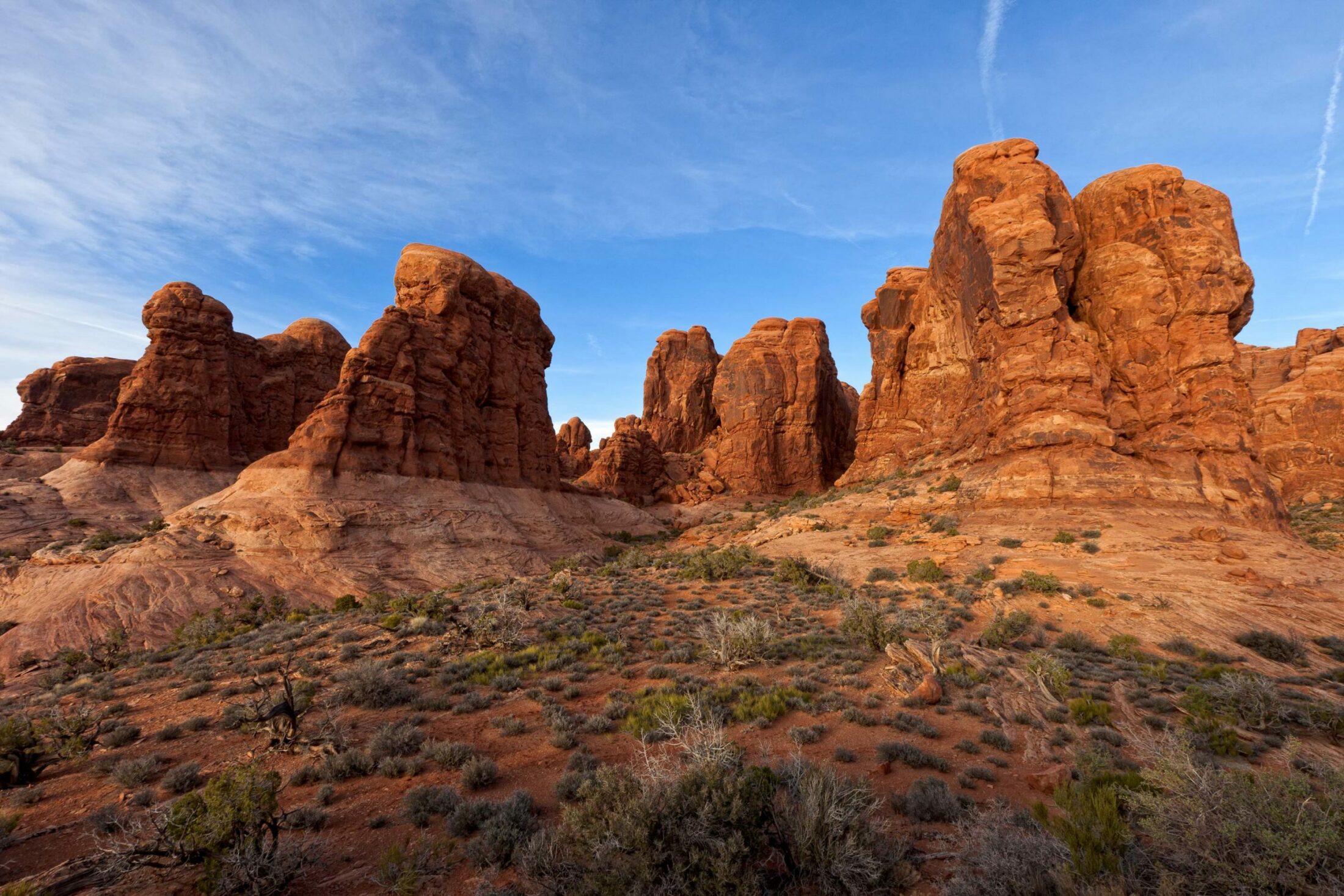
Photo by Bret Edge
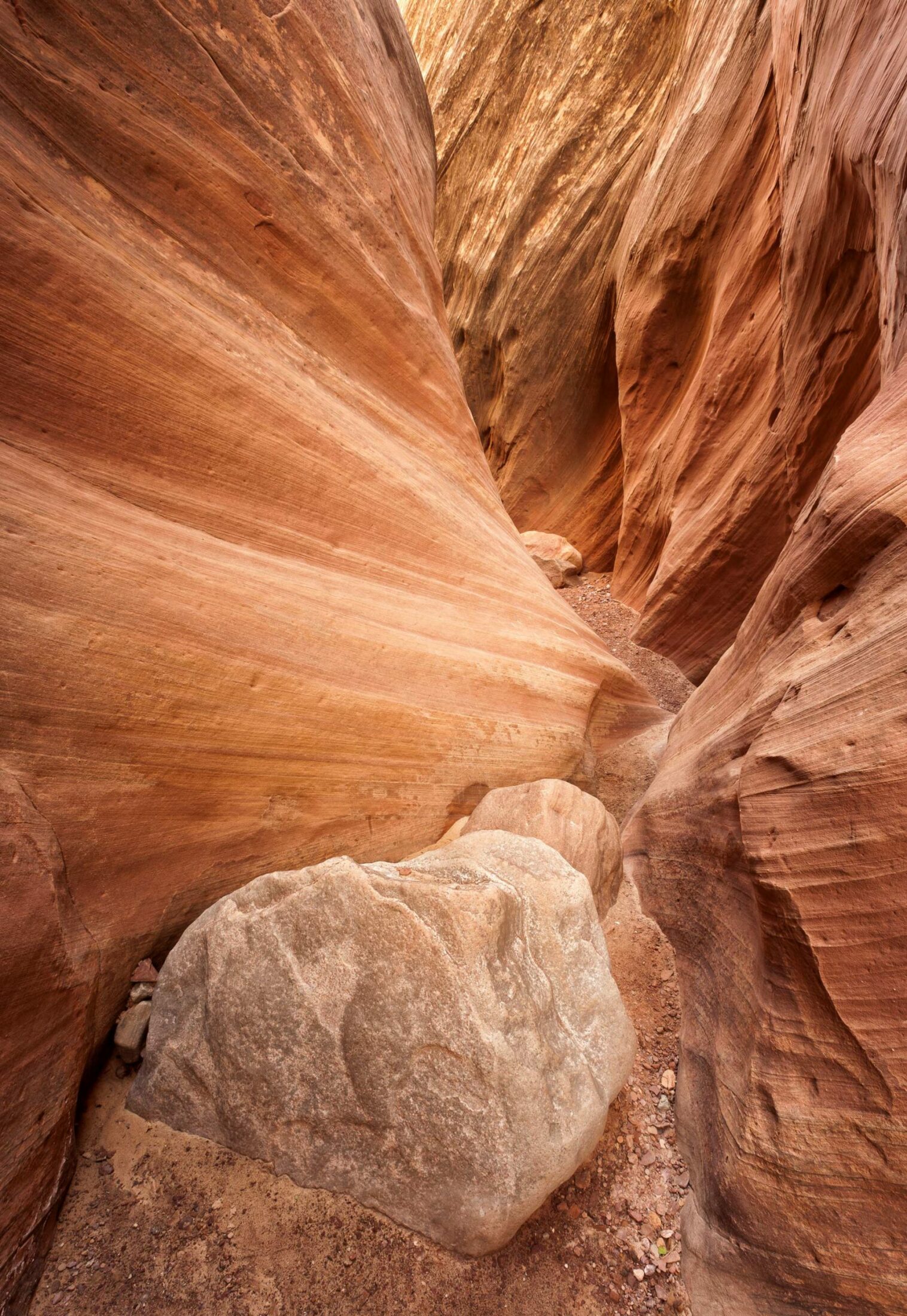
Photo by Bret Edge
Ralston has been widely accused of being a dumb ass, which he would not deny. The accusations, however, are not about improperly testing a wedged boulder before putting weight on it, but about being alone. People who die or are injured alone in the wilderness are often derided for their choice. Why would you go out there without a partner?
The honor, Ralston told me, was being able to see days and nights pass from this one place, no one to talk to but earth and sky. He used that word, honor. It sounded like a meditation, or at least moments of calm and appreciation in what must have been an otherwise terrifying 127 hours. He talked about the ribbon of stars that would come out, and then the cool blue summer light of dawn, followed by warmer tones, shadows chased out. All day the sunlight wove in and out of the rims above him, slanting down, almost touching bottom. Curved, flood-smooth walls cupped and released every shadow and every moon-shaped pool of light. Colors richened and dimmed, and soon the stars returned.
You could argue that solitude is not what we evolved for, and you’d be mostly right. We are social animals. One of the most developed parts of our brain is the compact, grape-sized angular gyrus, the part that lights up to unseen alliances, fealty to the invisible bond we have between each other and with ideas, not something all animals have. Our brains are uniquely adapted to live in close quarters with others—cooperation thought to be the reason our species has done so well. Along with bird flocks, packs of coyotes or wolves, prides of big cats, and bands of primates, we live and move in groups, surviving through strong relationships. Solitary behavior you’re more likely to see in lizards and beetles.
Almost 150 separate studies involving more than 300,000 participants found that those with stronger relationships had a 50 percent increased likelihood for living longer. Meanwhile, studies show that if you score high in loneliness, you are more likely to have high blood pressure. Loneliness could kill you. Choosing to be alone is not the same as being forced into it, not the same as loneliness. Solitude in excess may be unhealthy, and not necessarily something you want when a boulder rolls onto your arm, but it is its own form of medicine. It has its place.
The slot Ralston came to know so well is a fingerling tributary to a much larger canyon that comes down to the river a day and a half upstream of my canoe and me. Every canyon going by is a passageway, some big enough to let in dry flood-washes that can run like swollen rivers, some pouring off hundreds of feet, captured inside high sandstone boxes, boulders caught between walls high overhead.
The river is the bottom line. Everything comes here. As I paddle, I listen to it talk around the ripples of driftwood and babbling eddies. Evening takes a long time, cliffs reddening, shadows reaching across the water. Red buttes reflect out past the lengthening dark of the river gorge. I eat dinner on a sandbar, then push my canoe back in to travel downstream. Soon, tonight, the desert will be bathed in the milky light of a September’s Harvest Moon. In the city, I catch the moon out of the corner of my eye, surprised to see it, sometimes ashen in daylight, sometimes lopsided over an alley at night. There seems to be no rhyme or reason. Out here, you know the moon by the hour, the minute. At any time you could point to it, even if it’s straight down, hanging above China at this very hour. The stars, you know as well—names are given to asterisms perhaps nobody has heard before: the Miraculous Triangle, the Great Line, the Ears, the Blinking Eyes, the Horse Looking Square Down on You.
The price of being alone is that when something goes wrong, the ramifications are much worse. The payoff is in how you begin to see the moon, and how your breath rises and falls in a familiar, heartening way.
The river falls into the full dark of night, and still no moon. Stars reflect on calm water. This is the awkward time, the in-between, too dark to see a snag or rock ahead. I hear a soft chatter ahead and realize I’ve forgotten about the riffle that always sits at the mouth of Millard Canyon. Not really a rapid, it’s just a tricky spot, currents splitting around bony shallows.
You think of small mistakes when you’re alone. You measure your actions more carefully. What would a capsize mean, or a broken ankle, or half your gear washed downstream? Not death, you’d hope, but not particularly what you’d want. Desolation requires a sharper eye, presence of mind. Fear, even in small doses—the sound of shallow, boney water—is a call to attention.
I can’t see a thing as I bounce over rocks, canoe bottom scraping on Millard’s outflow. I ground in the middle of the river and turn around backwards, headlamp out but useless as it reflects across unsettled waters. I throw on a coat and step into shallow cobbles, guiding the canoe ahead foot by foot, water splashing up my calves. Scratch, bang, slam, and then we are free, floating back into the dark, waiting for the moon.
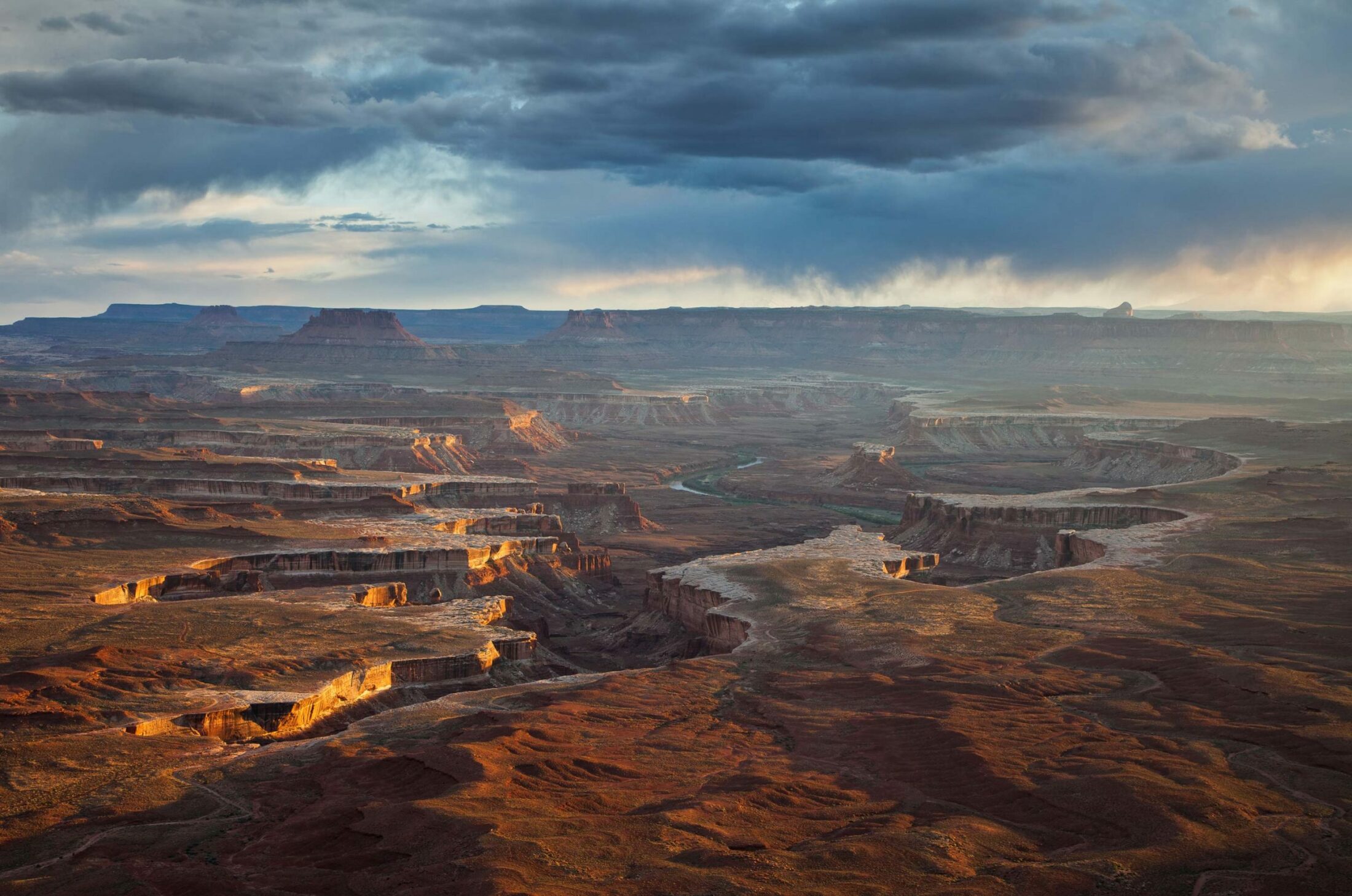
Photo by Bret Edge
Navel gazing, yes. I do it out there, but perhaps not as much as in the company of other people. I weigh my gestures and thoughts more carefully when I’m with others. I judge how to express myself, how to fit into the social environment of the moment. A pair of researchers in a 2003 study noted that when another person enters the room, people’s behavior and ways of thinking change. “We become conscious not only of the object we are viewing, but also of ourselves as viewers. Solitude can minimize such intrusive self-consciousness by reducing the immediate demands of experiencing ourselves as the object of another person’s thoughts and actions,” wrote Christopher Long and James Averill, from the University of Massachusetts. In this way, when we’re alone, we cease to be a concept of ourselves. Instead, we are ourselves.
Passing beneath a high, overhanging cliff in morning light, I pull in and tie off the canoe to a boulder. I scramble up the rock barefoot, getting up in the overhang, a space where seeps drip out of grainy sandstone. In the rock formation, ancient bedding planes act as a conduit for groundwater, which finds an exit through bare rock. I’d passed this dark seep many times before, when I worked as a guide on this river in my twenties and on other trips taken alone, and looked up and wondered at the pillow-moss hanging high overhead. But never had I stopped. Even alone I’d been too busy heading downstream, the river refusing to pause, calling the canoe to keep coming. This time I decide to stop, and I climb up. When I crouch high above the water in a rocky cove, the seeps sound like rain around me. They drip into sandy soil, leaving watery little pockmarks among castles of erosion, enough that I can bend down to kiss the ground for a drink. I tip my head up and open my mouth. Drops strike my tongue and cheeks like cold diamonds.
If someone were watching, I might have paused, wiped my face off, and excused myself.
Being alone is socializing with something more than yourself and those like you.
I walk as if in a trance, air pure, motionless. The river is a mile or two behind me on an afternoon’s walk into the desert. Tired of late summer heat, I find a piece of shade under a rock overhang big enough to curl up in. I tuck myself in like a small animal and fall asleep. I do what my body wishes, and exactly when it wishes it. I check no watch, ask no permission. I do what I know.
When I return to the river, I strip off my clothes and slide into cool water. I tie the canoe’s bowline around my waist, and the two of us drift downstream, as if perfectly in love.
You find a cadence in motion, the way the sun glides, shadows shrinking and growing. I climb out wet and quickly dry, sitting backwards in the bow of my canoe, adjusting for the absence of a second person’s weight so the craft will ride flat. Opening a tuna can, throwing in chopped onions, I let the river carry me wherever it wants. I sometimes come through here with groups, leading week-long trips of sun hats and zippy-pants, and I always have my mind on the next camp, calculating the landing, counting the number of Dutch ovens needed for dinner and dessert. I love the work. Cooking at a metal-framed camp stove in shorts and sandals, stirring a pot, and looking across an elegantly slow and stalwart river at the bottom of a stair-step canyon is one of my favorite pastimes. But more often than not, I would rather be alone. I’ll be talking, referencing, gesturing: the cliffs are this old, the flower is that species, pull hard on the bight, pick up the pace. But the river and its tattletale breezes lure me away from camp, the voices of my group diminished, and I can feel myself and the world again.
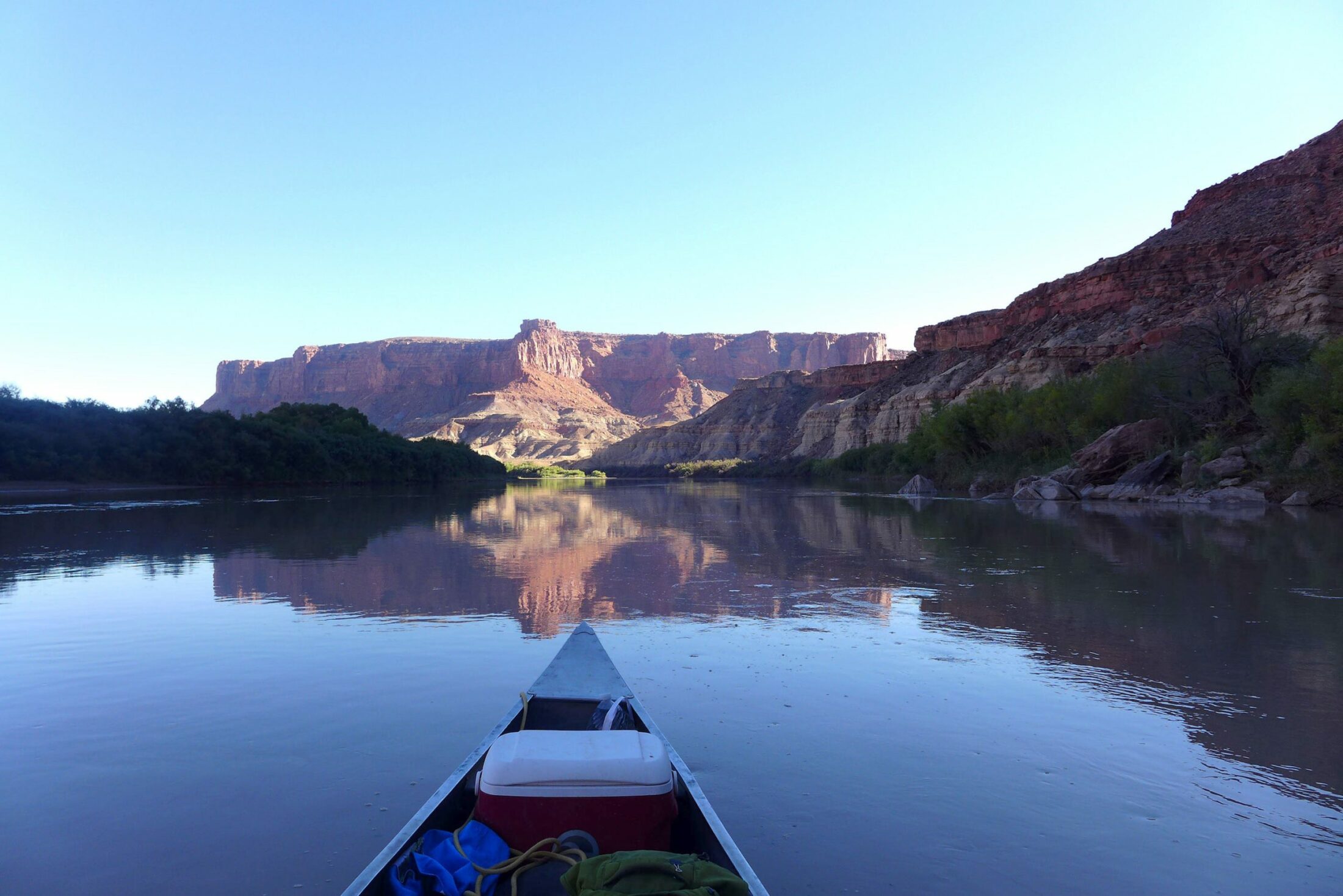
Photo by Craig Childs
The canoe and I float sideways, my gaze panning across the river to a bend in the canyon. The air shifts, a quick warm breeze, and the canoe turns. The compass arrow swings. I crane my neck for this new view as sandstone rises above me, the river carved several hundred feet through the red and white banding of Cedar Mesa Sandstone. Faces of rock are streaked with watermarks, black and red bars, waterfalls from old rains. Galleries of draped patina rise high above me until they become sky.
Startled by the shift in view, I say out loud, thanks.
We seek connection. A sense of belonging is necessary for basic human function. Think Tom Hanks talking to his volleyball, Wilson, in Cast Away. Speaking out loud to a river or a breeze suggests we are somehow bound together, as if we understand each other. Being alone is socializing with something more than yourself and those like you. It is a way of looking up from the day’s shuffle and talking to the larger world.
The Green and the Colorado meet in a laid-back and towering canyon, boulder ledges and cliff bands coming down to a V where two rivers merge. I paddle to a sandbar in the middle and park along the swirling line of two rivers coming together. With the canoe beached, I walk barefoot and knee-deep to where the river bottom drops away. The Green River, muddy from its journey down from Wyoming, swirls into the clearer Colorado. Mudwater swells and twists, a moving circus on the river’s surface. I’ve come about fifty miles, a good week of paddling and floating, enough time that I’m starting to understand the words I hear from the river, the rattle of reeds and watery gulp at the mouth of a beaver den.
I do this in a city, too, habitually walking over to storm drain grates where I hear water flowing through them. I listen to the burble and talk under the street, and for those few seconds, I am alone among millions. It’s why, I believe, we feed pigeons or sit on benches. Why we drink coffee alone at a table, or step out back for a smoke. It is why one might float down a river with no one else to talk to. Out here, you are speaking with a larger audience.
From far up the Colorado River comes a growl, echoes of a jet boat engine. Soon there are words, talking, the jet boat driver removing his earplugs to tell me he has a pickup downstream and he’ll come back around for me and my gear. I wave as he powers away, his jet boat bending out of sight downstream. However long I have left, I hold like a breath, taking in the boulders, the water, the slow move of a breeze, the aloneness like air in my lungs.
